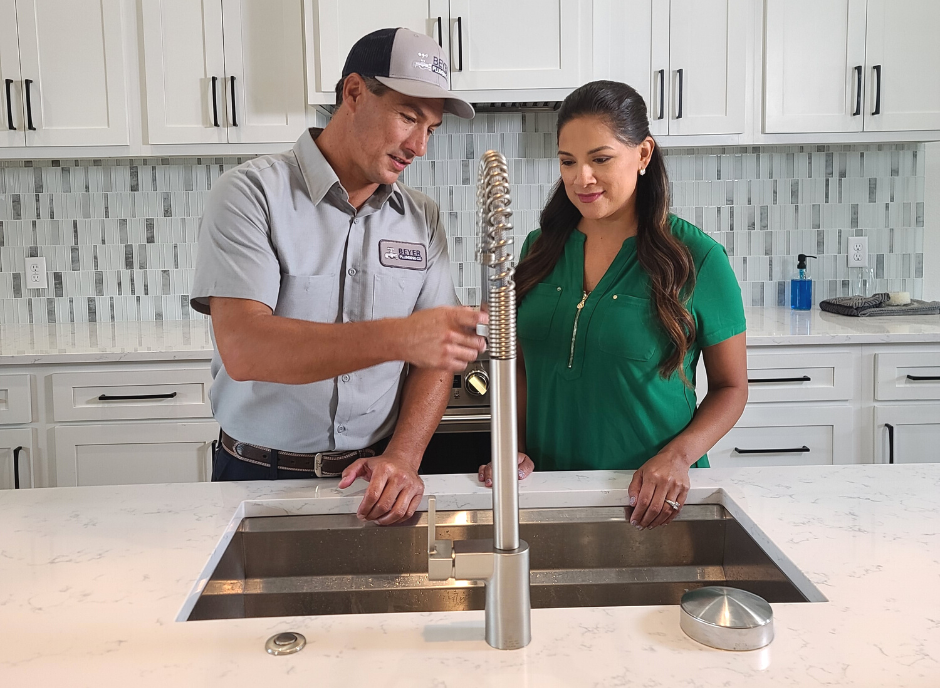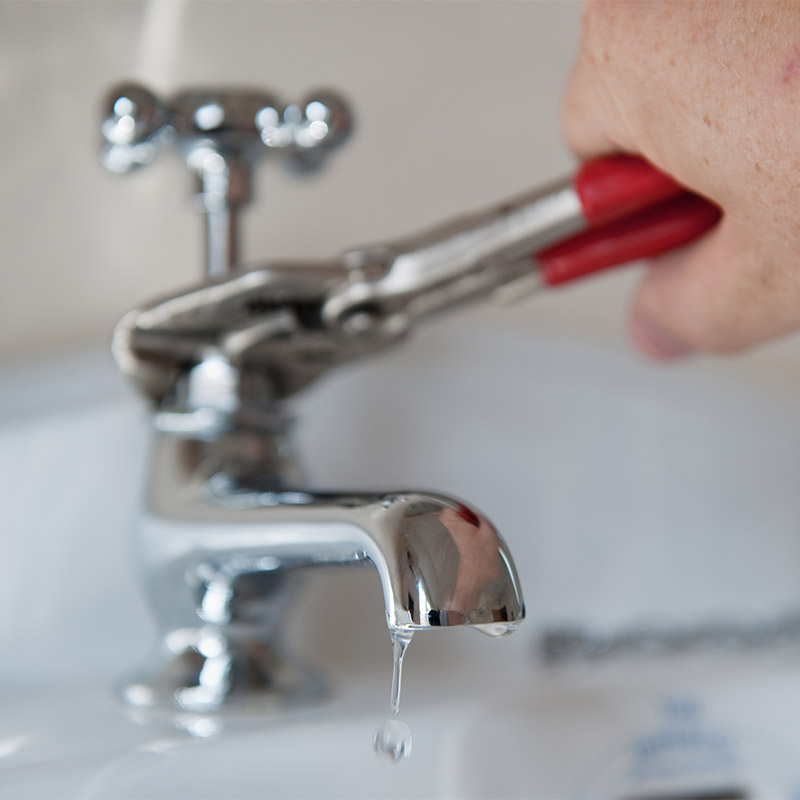Just about everyone is bound to have their own way of thinking on the subject of What Causes Leaky Faucets & How To Fix Them.

Trickling taps could look like a minor inconvenience, yet their impact goes beyond simply the aggravation of the audio. From drainage to sustaining unneeded monetary expenses and wellness dangers, overlooking a dripping tap can lead to various effects. In this write-up, we'll delve into why it's critical to address this common house issue quickly and effectively.
Waste of Water
Ecological Impact
Dripping taps add considerably to water wastefulness. According to the Environmental Protection Agency (EPA), a single tap trickling at one drip per secondly can waste more than 3,000 gallons of water each year. This not only stress water resources but likewise affects ecological communities and wild animals dependent on them.
Step-by-Step Overview to Fixing a Dripping Tap
Tools Called for
Prior to trying to fix a trickling tap, collect the required devices, including an adjustable wrench, screwdrivers, replacement components (such as washers or cartridges), and plumber's tape.
Usual Faucet Issues and Their Solutions
Determine the kind of tap and the certain concern causing the drip. Usual issues consist of worn-out washers, rusty valve seats, or defective O-rings. Describe maker instructions or on the internet tutorials for step-by-step advice on fixings.
Financial Costs
Raised Water Bills
Beyond the ecological influence, leaking faucets can inflate water bills considerably. The accumulated wastage with time converts right into higher utility expenditures, which can have been prevented with prompt repair work.
Potential Property Damage
Furthermore, prolonged trickling can lead to harm to fixtures and surfaces bordering the tap. Water build-up can create staining, corrosion, and also structural problems if left unattended, causing additional fixing expenses.
Wellness Concerns
Mold And Mildew and Mold Development
The continuous presence of wetness from a trickling tap develops an ideal setting for mold and mildew and mildew growth. These fungi not just compromise interior air top quality yet additionally pose health risks, especially for individuals with breathing problems or allergies.
Waterborne Illness
Stationary water in dripping taps can end up being a breeding place for bacteria and other microorganisms, increasing the risk of waterborne conditions. Contaminants such as Legionella bacteria prosper in stagnant water, potentially leading to major illnesses when consumed or inhaled.
Do it yourself vs. Expert Fixing
Advantages and disadvantages of Do It Yourself Repair
While some might try to deal with a trickling tap themselves, do it yourself fixings come with their very own collection of difficulties. Without appropriate understanding and tools, do it yourself attempts can exacerbate the concern or bring about incomplete repair work, lengthening the trouble.
Advantages of Working With a Specialist Plumber
Working with a professional plumber ensures that the underlying source of the trickling faucet is addressed properly. Plumbing professionals have the competence and devices to diagnose and repair tap problems effectively, conserving time and reducing the threat of additional damages.
Environmental Duty
Private Payment to Conservation
Taking duty for repairing trickling taps aligns with wider initiatives toward water conservation and ecological sustainability. Every person's activities collectively make a considerable influence on maintaining precious resources.
Sustainable Living Practices
By focusing on punctual fixings and adopting water-saving practices, individuals add to sustainable living methods that profit both present and future generations.
Safety nets
Routine Maintenance Tips
To avoid leaking faucets, carry out routine upkeep such as cleaning aerators, inspecting for leakages, and changing damaged parts without delay. In addition, consider installing water-saving devices or updating to a lot more effective fixtures.
Relevance of Prompt Fixes
Dealing with leaking faucets as quickly as they're discovered protects against more water waste and potential damages, ultimately conserving both water and cash in the long run.
Influence On Residential Property Value
Understanding of Well-Maintained Residential Or Commercial Property
Maintaining a property in good condition, including addressing maintenance problems like trickling faucets, boosts its viewed worth and value among prospective customers or lessees.
Impact on Resale Worth
Residences with well-kept plumbing fixtures, including taps, command greater resale values in the realty market. Resolving dripping taps can contribute to a positive impression throughout building evaluations and negotiations.
Final thought
Dealing with a leaking tap exceeds mere benefit; it's an essential step towards saving water, reducing financial expenses, and protecting health and wellness and property. Whether via do it yourself repair services or expert assistance, taking action to fix trickling taps is a small yet impactful method to advertise liable stewardship of sources and add to a healthier, more sustainable future.
How to Fix a Dripping or Leaky Faucet
A leaking faucet is one of the most common problems that homeowners encounter, but it being commonplace doesn’t make it any less annoying. The constant drip drip drip of a leaking bathtub faucet, showerhead, or sink tap can disturb your home’s serenity. Left neglected, a dripping faucet can also result in higher water bills and discoloration or mold growth in your sink or plumbing fixtures.
Fortunately, you don’t have to be a trained plumber to know how to stop a dripping faucet. With some basic tools, replacement parts, and a little patience, leaky faucet repair is a breeze. In this article, we’ll explain what causes dripping faucets and how you can fix them.
What Causes a Leaking Faucet?
Kitchen and bathroom faucets come in all manner of designs, but most involve some combination of valves, O-rings, seals, and washers. The O-ring is usually the weakest link, but any one of these pieces can wear down over time. Heat, moisture, temperature fluctuations, minerals, mold, and movement can contribute to warping and corrosion, breaking the watertight seal. This just comes with the territory of being a homeowner. Everything is always subject to wear and tear, and some component parts of your appliances and fixtures need to be replaced on occasion. At least replacement O-rings are cheap!
More rarely, dripping faucets can be a symptom of excessively high water pressure. Were this the case in your home, you would probably notice that the leak is not isolated to one faucet. Water pressure issues are harder to resolve on your own. We recommend contacting a professional plumber if you suspect your water pressure is too high.
How to Fix a Dripping Faucet
Pipe wrench or monkey wrench Allen wrench set Screwdrivers Old towel or rag Shut off the water.
Before you do anything, you need to turn off the water to keep from drenching your kitchen or bathroom. You should find a valve under the sink and against the wall. Once you’ve turned this valve, try turning the faucet on to confirm that the water source has been cut off.
If you can’t locate your local valve for the faucet you’re working on, you can always shut off the water to the house at the main valve. Of course, this will prohibit anyone from using the sinks, showers, or toilets while you’re working on the faucet that’s giving you trouble.
Plug or block the drain.
You’ll be disassembling the faucet and removing some small bits of hardware. Plug the drain with a stopper or rag to avoid the possibility of a small screw falling into your P-trap.
Take apart the faucet assembly.
There are several varieties of kitchen and bathroom faucets, each with its own manner of assembly. For detailed instructions on how to disassemble your faucet, you can refer to the fixture’s manual or contact the manufacturer. If you know whether you have a ball, disc, cartridge, or compression faucet, you can find detailed schematics online.
In general, you need to begin by removing the faucet handles. You might notice a small screw that you’ll need to remove with a screwdriver or Allen wrench. If you don’t see any visible securing hardware, it’s likely hidden under a decorative cap that can be unscrewed or popped off with flathead screwdriver.
Remove each piece methodically, consulting a schematic when necessary. Take notes or arrange the pieces in such a way to make it easier to correctly reassemble the faucet later.
Remove the cartridge.
Once you’ve removed the handles and securing hardware, you should be able to remove the valve cartridge or stem. Some cartridges will slide right out. Other faucet models will require you to loosen a nut with a pipe wrench before you can remove the valve stem.
Examine the exposed hardware.
With the cartridge or stem removed, inspect the component parts. Check the rubber O-rings for wear and tear. Also examine the seat washer for corrosion or other damage. These pieces are usually the responsible parties for a dripping faucet, but it’s worth inspecting the other component parts while you have the faucet disassembled.
Find replacement parts.
Once you’ve identified which faucet component has failed, find an identical replacement. Your local hardware store should have O-rings, seat washers, and other standard components in stock. If you have a luxury or uncommon faucet, you may have to contact the manufacturer for a replacement part.
It’s a good idea to take your old parts with you to the hardware store so you can compare them with the store’s inventory and be sure you’re purchasing the correct replacement.
Reassemble the faucet.
With your new parts in hand, reconstruct the faucet and handles. Don’t be tempted to overtighten screws or nuts. You might think this could create a better seal, but it can instead damage or bend a delicate part of the assembly and create a new problem for you.
Turn on the water and test the faucet.
The only thing left to do is test your work. Unplug the sink, turn the water back on, and try the faucet. Congratulate yourself on a job well done!
https://www.libertyhomeguard.com/how-to-fix-a-dripping-or-leaky-faucet/

I hope you enjoyed reading our article on . Thank you so much for taking a few minutes to browse our blog. Do you know anybody else who is interested by the niche? Take a moment to promote it. I am grateful for your time. Kindly pay a visit to our website back soon.